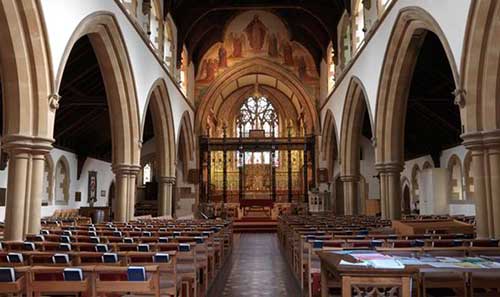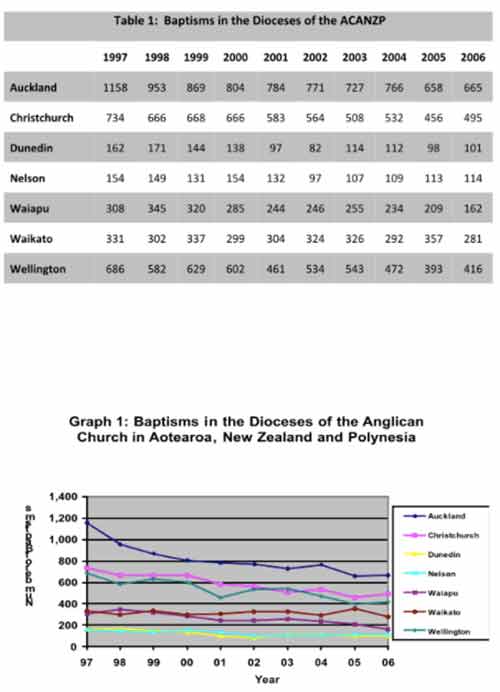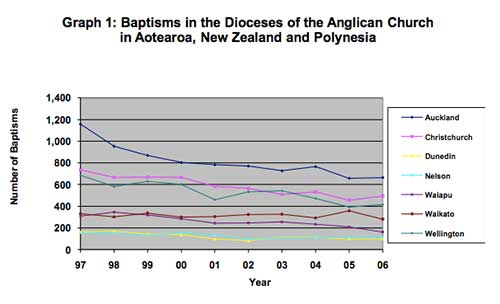
Over twelve thousand people engaged with the post Millennials Are OVER Church. [Incidentally, far more did so on facebook than on the blog – which is itself worth further reflection].
The number one reaction to the post was: it is not just millennials who are over church. [The carping versions of that point would have criticised an article which praised plums as a lovely fruit by saying, “why are you forgetting about bananas – they are lovely fruit too?”!]
Yes, I agree with this first reaction: older people are leaving church and attending less frequently also.
The second reaction was disagreement with my post’s points. Older people said they would get millennials to argue against my points. The millennials never once complied to do so. Or older people said they knew of younger people who didn’t fit my generalisation. One person invited a pastor of a “successful large millennial church” to react. The reaction never came, but I managed to track down the church that was being talked about. This church has an attendance of seventy to eighty people, with the majority of those being millennials. This church sits in an area which has about 150,000 millennials.
So it’s very much the exception proving the rule.
And I also talked with a millennial who goes to this particular church, and I asked what makes it attractive to millennials? There was no hesitation – it was this church’s outward-looking, actual caring for people in real need. This was a primary point I was making in my original post.
We can and need to learn from the exceptions.
A repeated refrain in reaction to my post (including from older people in relation to themselves – not just to millennials) is that, in church, answers are being provided for questions that aren’t being asked. While there’s plenty of real needs, many churches seem to follow a paradigm of, rather than addressing those real, actual needs, trying to convince people of a need they aren’t aware of and then fulfilling this new need.
People want to come away from each and every service with something to feel, something to think about, and some concrete action they can actually go out and do.
We’ve just had Christmas services, and clergy put up photos of full churches and successful services. That’s great. Let’s be honest with ourselves – how have the Christmas-attendance statistics varied over years (decades)? How are the numbers looking in a region (nationally)? What percentages went to church this Christmas (and how are those percentages trending)?
More significantly – like the seventy-strong church with a high number of millennials – what is it that makes Christmas services attractive?
*****
Postscript:
I have just been (re)reading Rev. Dr Jenny Dawson’s Towards a Radical Political Theology of Baptism (online here). I was taken by the statistics and the graph of baptism numbers from 1997-2006 in the NZ Anglican dioceses:

In the decade from 1997 to 2006, baptism numbers in our largest diocese halved. In most places they dropped by a third.
Our church keeps no national statistics. So, here, let me do this for you (with Jenny’s help): In 1997 there were 3,533 baptisms in the NZ dioceses. In 2006, there were 2,234. That’s a drop of 37% in a decade.
If my savings halved or dropped by about 40% (not even mentioning inflation – the equivalent of NZ’s population growth in this story) in a decade – I would be gravely concerned. If the church’s Trusts dropped in financial value by that much, I’m sure there would be grave concern! But tell me how widespread the drop in baptism numbers has even been noted?!
*****
Further Reading
Millennials Are OVER Church
End of the Anglican Church?
End of the Anglican Church (part 2)?
End of the Anglican Church (part 3)?
*****
Whether you regard the Christmas Season as concluding on Christmas Day, Epiphany, the Baptism of the Lord, Candlemas, the Sunday following Candlemas, or are Orthodox, or Armenian, and celebrate the Incarnation on another day and see the season differently… in the Southern Hemisphere, and certainly in Aotearoa-New Zealand, this is our go-slow time…
If you appreciated this post, do remember to like the liturgy facebook page, use the RSS feed, and signing up for a not-very-often email, …




Quite some time ago, a friend described for me a very rough sociological portrait of a person’s spiritual life. (It only goes so far, of course…)
Ideally, one’s childhood iss one of education and worship, but circumstances often lead young adults to other pursuits and interests. The financial needs of family and the trajectory of career often were placed before worship during one’s ‘earning years,’ and are now only intensified by the need to care for elderly parents. It is when one lands finally in those ‘blissful’ years of retirement that God gains ground in the forefront. Perhaps it is the grandparents who are best prepared to educate the young and to serve as role models?
Thanks, Kevin,
I think there is much truth in your point – there are life-stages in our faith journey. But I also think that God can meet us in those different life stages, and church should be able to be the context (IMO) to connect God with each of the life stages.
I well remember a priest saying to me that I shouldn’t be concerned: the church was always full of Babushkas, and other Babushkas would always come along to fill their place. I’m not convinced by that analysis. But I’d be happy to be wrong.
Blessings.
Hi Bosco
I think this is very important, from what you say above:
“People want to come away from each and every service with something to feel, something to think about, and some concrete action they can actually go out and do.”
I wonder how many of us involved in preparing services and sermons start with that outcome and work backwards?
(On another matter, I think baptismal etc statistical decline is noted, here and there, in bits, e.g. in Synods when we discuss reports. What is lacking, IMHO, is a sense of urgency, of crisis, of the kind of despair which leads to action when we note the decline.)
Thanks, Peter.
Yes – I think working ‘backwards’ in the way you describe is important. At the end of preparation, those points could be strong questions we ask of what we have prepared. I also think that we could have a “curriculum” (for want of a better word), that we want to cover over a set period, of concrete current issues: depression, inequality, anger, healthy relationships, money, sex, forgiveness, work, stress,… One can start from what the lectionary provides and make sure that those concrete ‘issues’ are covered (say over a period of a year) – sometimes such a topic will need more than a single exploration, and planning the year ahead can help with that.
Yes, there may be the occasional (diocesan) synodical nod to some statistic or other – but I am unaware of any overarching, national, as-you-say-urgent analysis “which leads to action”.
Blessings.
Thanks, Bosco.
“People want to come away from each and every service with something to feel, something to think about, and some concrete action they can actually go out and do.”
This really struck me, too. From my perspective in the pew, my parish’s most electrifying feeling/thinking moments have come when our Director of Children and Youth Ministry has been invited to give, instead of a homily, a “Godly Play” exposition of the gospel for the day, with all the children around her at the front. You could hear a pin drop in the building when she’s speaking (and, as important, being silent).
Here’s an example (not from my church) of a Godly Play story we had recently. I found it provocative and powerful. It led me quietly and unsuspectingly into a fresh glimpse of Christ as the Good Shepherd who puts himself between the wolf and the sheep:
https://www.youtube.com/watch?v=4I9GiHqIshU
Our children’s ministry is the best thing going on at our church. There are some really great teens who have come up through it and who now assist with it, as well as having their own (apparently really fun) group that works through hard questions about faith and real life. Of course, they’ll all disappear when they go to university. I hope that they will be our gift to some other church where they will be fully alive adult Christians.
But I have been wondering lately if it wouldn’t also be helpful to have a “Godly Play for Grownups” time before our main Sunday service: a quiet Godly Play meditation on the gospel for the day, or maybe the OT lesson, which could then flow into a short, simple form of Morning Prayer, with a reading of the same story from the actual biblical text and time for quiet meditation on it. Feeling and learning in the setting of prayer.
As for “concrete action,” it might help to recall that this too is a traditional fruit of meditative practice, such as the “resolution” at the end of a lectio divina or an Ignatian three-stage meditation. If we follow that model, then “action” will not be something suggested by a committee charged with finding ways to “grow” the church, but rather something flowing from the collective meditative discernment of people within the congregation whom the Lord is calling to similar forms of service. These would be supported and enabled by ordained and lay leaders in the community. And their initiatives could in turn provide a point of entry for people on the outside who, from whatever source or experience, have discerned a similar calling, and who will come into contact with the Gospel through the people serving alongside them.
Then again, there’s a lot to be said for what some churches here in Toronto have done: inviting representatives from the police, from social services, and from community organizations, and asking them, “What do you need or hope for from the church in this place? Where are the needs that we would be well placed to serve?”
These are great, concrete, positive ways forward, thanks, Jesse. I come across “Messy Church”, here, in NZ, but not “Godly Play”. I’d be interested in knowing where it is followed in NZ. Blessings.
Thanks for sharing your heart with us in this post. It’s sad that many people of all ages are leaving the church. We have to stand firm until the end no matter what others are doing.
Thanks, Lisa. I guess I’m trying to see if there’s a way forward beyond those of us still attending church staying “until the end” and the last one left switching off the light 🙂 Blessings.
Lisa, I think you may find that “We have to stand firm until the end no matter what others are doing” isn’t the solution, it’s the problem.
“Godly Play” looks like a nice little earner for someone:
https://www.godlyplayresources.com/
Thanks, David. This sounds like an offer from you for a franchise? Blessings.
Not my cup of tea, Bosco, but you’re welcome to the antipodean franchise!
Well, for those of us who also don’t knit our own sweaters or make our pasta from scratch, it’s pretty handy to be able to buy this stuff ready-made! Our children’s ministry director says that each story kit costs about $100 (Canadian). I’ve thought it would be great to provide parishioners with a list of what stories she’d like to acquire so they can earmark donations for them. And if there is someone artsy and handy who’d like to make a kit from scratch, well, so much the better.
For those who haven’t heard of it, “Godly Play” is a Montessori-based approach to children’s religious education, devised by an American Presbyterian-minister-turned-Episcopal-priest, Jerome Berryman. It is similar in many respects to “Catechesis of the Good Shepherd,” a somewhat older Roman Catholic programme created by Sofia Cavalletti, author of “The Religious Potential of the Child”. (Berryman and Cavalletti were friends, and Berryman drew on some of Cavalletti’s methods.)
There are different theological slants that separate Godly Play from Catechesis of the Good Shepherd. For example, Godly Play is more Theocentric (leading children to a relationship with God as Creator), while Catechesis of the Good Shepherd is more Christocentric (leading children to a relationship with Christ who has “called them by name”). They approach the Old Testament slightly differently: GP could bee seen as a more Protestant “covenant theology,” and CGS is more typological. But both share much in common, such as attention to the cycle of the Church year (e.g., with liturgical colours).
On balance, I probably prefer Catechesis of the Good Shepherd theologically, which my daughter was able to experience in a wonderful way at an Anglican church when we lived in Ottawa. (It’s offered at a Polish Catholic church here in Toronto, though found barriers of location and culture have kept us from trying it out.)
But my general impression is that Godly Play has the advantage of being a good deal more “portable” and adaptable. The extra benefits of CGS come at the cost of more training for the leaders, more equipment to be bought or made, a more intensive demand on time and space, and less flexibility for different applications. No matter which one you choose, it’s guaranteed to be streets ahead of most of the “Sunday School curricula” out there.
Lately I’ve been bingeing on the writings of an ascetical theologian called Martin Thornton. He makes the important point that all of us must, in the course of our lives, pass through the phases of religious development that humanity has had to go through. We must first experience “natural religion,” a sense of wonder at the world founded on observation of things, “whether an ant or an alp.” (He often refers to Julian of Norwich’s vision of creation as a hazelnut in the palm of God.) We appreciate these other “beings” as separate from us, and being to intuit a Being who gives being to all things. The leap from natural to revealed religion is, for Christians, a dawning comprehension of the Incarnation: that Being Itself took on the solid flesh of a created being.
What I so appreciate about Godly Play is its attention to this “natural ascetic” of observation, inviting children just to notice the objects with which the story is told. “What do you think this could be? What colour is it? What does it feel like?” It reminds me of the first, “imaginative” element of Ignatian meditation, i.e., “composition of place”. Being a hopelessly abstract, conceptual thinker, I find that style of meditation extraordinarily difficult, and maybe that’s why I appreciate Godly Play all the more: it “composes the place” right in front of my eyes.
Thanks, Jesse. I know of an Anglican parish in NZ that follows Catechesis of the Good Shepherd – I don’t know if they are listening in on this conversation, but I will certainly point them to it. Blessings.
It’s never been truer than in the twenty-first century that you have to give people what they want, otherwise they’ll go elsewhere. Think of bookshops, which have become more like libraries with cafés. Or pubs, which now welcome families and children, serve decent food, and often contain post offices or local shops in rural areas. Or pretty much anything. Times change, people change, and if a business (or an institution) doesn’t change, old members leave, and new members don’t come.
So, the trick has to be to evaluate carefully and honestly what people want, however painful that might be to one’s preconceptions or cherished shibboleths, and give it to them. Or wither and die.
I’m just concluding “God in the Wasteland” by David Wells and he argues the idea of giving people what they want, effectively making God a product you can buy only as much of as is comfortable, is part of the problem. Reducing God to palatable bites means no God at all and if we perceive ourselves as a customer while believing the customer is always right we may never encounter God in a fashion that sees us confronted His absolute holiness and what that means for us.
There was much to contemplate in this book and I suspect I’ll have to read it again.
Thanks, Terry, for pointing to this book. It looks a bit old (in our fast-changing world), but I’ve been thinking along similar lines towards a future blog post around critiquing (mis)understanding of truth in our post-modern context. Blessings.